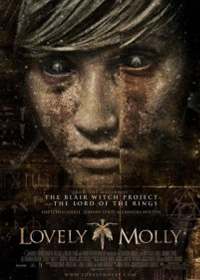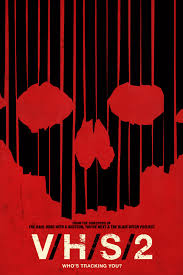Stephen King wrote, “We make up horrors to help us cope with the real ones.” Director Eduardo Sánchez has played doctor, of sorts, helping audiences cope with their horrors in a busy career that broke

Now credited as a director in his seventh feature film, Sánchez uses the style of storytelling “Blair Witch” championed – found footage – in his latest work: a short film segment in the horror anthology sequel V/H/S/2. He originally connected with the writer of that segment, Jamie Nash, after finding him on InkTip in 2004. Since then, they have collaborated on six feature films together, including V/H/S/2. Though found footage had been popularized in documentaries such as the films of Ken Burns, and in mockumentaries, such as Orson Welles’ F for Fake, the public experienced it at a wide level in groundbreaking fashion with Blair Witch, which cemented Sánchez’s handprints onto not only horror’s sidewalks, but onto those of a future generation of filmmakers making all types of movies.
To understand its context, we must first go back to 1999, a year so seminal for Hollywood – and not only because it brought in big dollars – that it shifted the culture of moviemaking from lessons the landmark films taught us. The Matrix taught us to experience bullet time and that some DVDs, due to not only the movie's rewatchability, but the special features, were must-buys. The world awaited Star Wars Episode 1 and though that may have disappointed generations of fans, many then decided that the real "cool" film, anyways, was the one you’re not allowed to talk about: Fight Club. American Pie served heaping slices of gross-out comedy to teen/college audiences, while American Beauty taught us that being normal is overrated, especially when the abnormal win Oscars. The Boondock Saints taught us that cult hits (and directors) can rise quickly and fall just as fast, and Magnolia reminded us that big action stars like Tom Cruise can return to their dramatic roots and (almost) win an Oscar. The Sixth Sense taught us to see dead people everywhere we go and twist endings in every movie we watch, while Being John Malkovich taught us that originality in Hollywood is not dead. Quite an impressive list. Yet one film had an influence that permeated the filmmaking experience from conception through marketing like none other from that year: The Blair Witch Project.
A record-shattering achievement, it not only inspired a new generation of horror makers, but influenced countless business plans, where producers listed the little engine film that did as a comparison project to their own, persuading investors to just believe in theirs, too. Before the smash hit Paranormal Activity—a $15,000-budgeted film seemingly haunted by the spirit of Blair Witch in its found footage style (although with intent

True, one can correctly assert that Star Wars is the most popular of all franchises or that the philosophy of The Matrix made film discussion hip again, but about what other movie released in the last 20 years could Roger Ebert have said would “place the capacity for feature filmmaking into the hands of anyone who is sufficiently motivated?”
After the “Blair Witch” explosion in ’99, the next generation of horror filmmakers began to pick up their digital cameras, shooting on nights and weekends, sweating through tiny film after film. And though some were literally “zero budget,” many were made with budgets slightly higher than $60,000 and released quite successfully to fans that cared less about the budget and more about genuine scares. Or as Ebert prophetically claimed, “audiences will not demand traditional ‘production values’ before parting with their money.”
For Sánchez and his Haxan Films banner, he kept working, making more and more horror movies, such as Altered (2006) and Lovely Molly (2011) through his long working relationship with Nash. As a veteran of the horror movie universe, Sánchez was chosen to direct a spot in the found footage-filmed V/H/S/2, which is akin to asking the Wachowskis to direct a sci-fi movie with plenty of bullet time sequences. Yet if it sounds like Sánchez’s career has been unceremoniously rewound, it hasn’t. Fans in horror often have a way of showing appreciation by acknowledging influential filmmakers and stars perhaps more than in any other genre, and demanding that they appear in or direct more movies. And though Sánchez avoided filming in found footage style until he shot 2014’s Exists, that influence carried on in recent years in other genres of movies such as sci-fi (Cloverfield), action (Chronicle) and comedy (Project X). Some are hits, some not so much.
A lesson the years that have passed since“Blair Witch” premiered taught us is that even if we’d like to repeat history’s surprise victories, they seldom happen when we try to manufacture them. If an alternative civilization watched a found footage movie of Hollywood’s activities, they may see more swing-and-misses than hits, but they’d at least see plenty of hopefuls at bat, swinging away. Much of that confidence is due to a $60,000 film from '99.
V/H/S/2 (2013), the anthology sequel directed by a stable of horror and midnight movie filmmakers such as Eduardo Sánchez, and written by Jamie Nash, amongst seven others, is available for rental and purchase.
